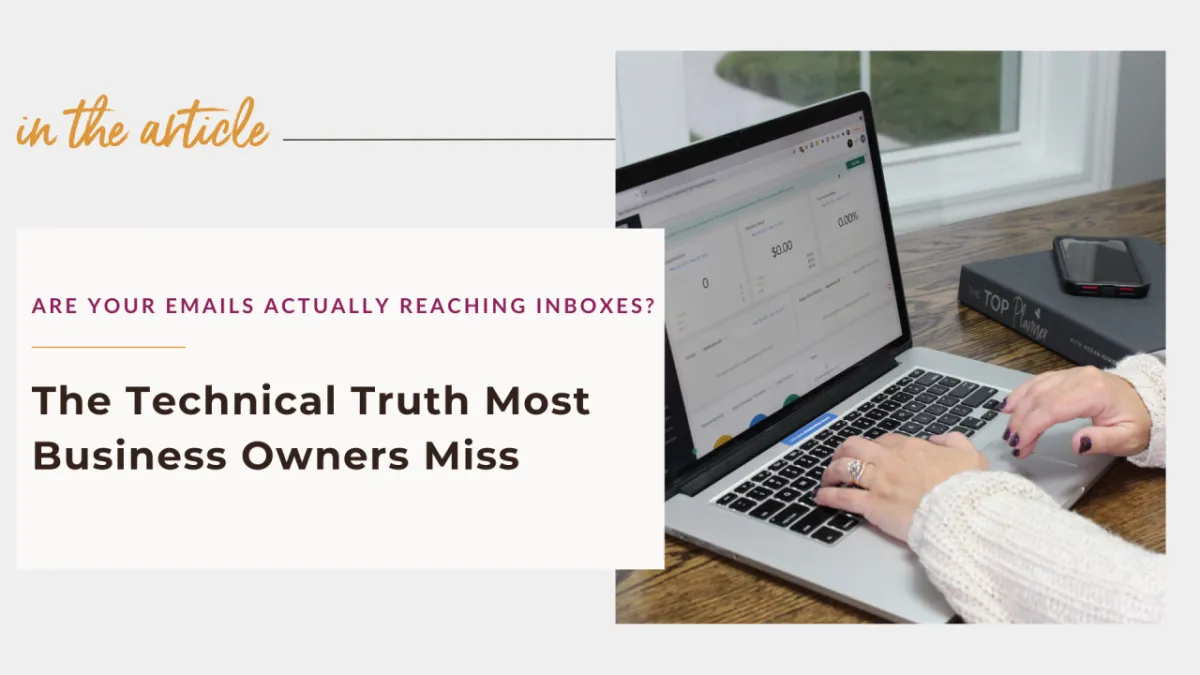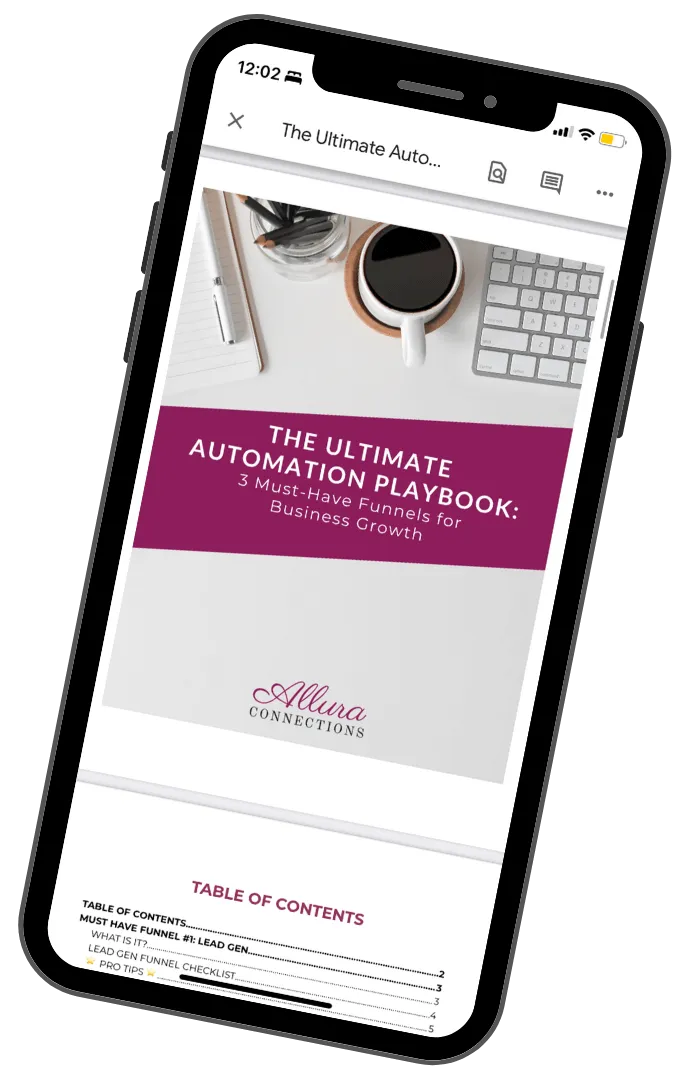
Are Your Emails Actually Reaching Inboxes? The Technical Truth Most Business Owners Miss
Have you noticed your email open rates declining lately? It might not be that your subject lines need work—your messages might never be reaching inboxes at all.
And you’re not alone, many small business owners don't realize: major email providers like Google, Yahoo, and Microsoft have quietly implemented strict technical requirements that could be filtering out your emails.
The Hidden Technical Problem Affecting Your Business
The issue lies in something called email authentication—specifically, the technical DNS records that verify your emails are legitimate. Without proper SPF, DKIM, and DMARC configurations, your important messages are increasingly being flagged as suspicious or sent straight to spam folders.
Let me quickly explain these terms in plain English:
SPF (Sender Policy Framework): This is basically a list of approved servers that are allowed to send email from your domain. It's like having an approved guest list for your exclusive party.
DKIM (DomainKeys Identified Mail): This adds a digital signature to your emails that verifies they haven't been tampered with. Think of it as a wax seal on an important letter that proves it's authentically from you.
DMARC (Domain-based Message Authentication, Reporting & Conformance): This tells receiving email servers what to do if an email fails the SPF or DKIM checks. It's like having instructions for the bouncer at your party on how to handle gate-crashers.
Without these three technical elements properly set up, major email providers increasingly view your messages with suspicion, and that's when deliverability problems begin.
What's worse?
Most business owners have no idea this is happening until it's already caused significant damage to their client communications and potential sales opportunities.
A Real Story That Might Sound Familiar
Maria, one of my clients, runs a thriving consulting business with dozens of high-value clients. When she came to me, she was feeling frustrated and confused after noticing a troubling pattern—her email open rates were plummeting, follow-up communications seemed to vanish into thin air, and client communication was breaking down.
"I thought my clients were suddenly losing interest in my emails," she explained. "I was about to hire a copywriter thinking my subject lines were the problem!"
When we investigated together, we discovered her email authentication was completely missing. Her domain had no proper SPF record, DKIM was non-existent, and there was no DMARC policy in place. This meant that major email providers were increasingly filtering her messages as suspicious—they were either never arriving or landing directly in spam folders.
Maria wasn't experiencing a content problem; she was facing a technical email deliverability crisis that was silently undermining her business relationships.
The Simple Solution That Made All the Difference
After working together to properly configure her DNS settings with the correct authentication records, Maria saw immediate improvements. Within weeks, her email open rates returned to normal.
"It was like someone flipped a switch," she told me. "Suddenly clients were opening and responding to my emails again, and several even mentioned they'd found my previous emails in their spam folders." Her business communication channels reopened, and the proposal acceptances she'd been missing started coming through again.
As someone who specializes in simplifying technology and business processes for entrepreneurs just like you, I see this issue all the time.
Many business owners focus on crafting the perfect email but completely overlook the technical foundation that ensures those messages actually reach their destination.
Why This Problem Is So Dangerous
The email authentication problem is particularly troubling because it happens silently.
There's rarely any notification when your emails fail authentication checks—they simply disappear or get filtered away. But once we implement proper SPF, DKIM, and DMARC records as part of a comprehensive technical foundation, the results can be dramatic.
Not only do your emails reach inboxes properly, but your domain reputation improves over time, leading to even better deliverability and more consistent communication with your clients.
Three Questions That Could Transform Your Email Effectiveness
Based on my experience helping clients overcome these technical hurdles, I've found that asking yourself these three questions can be eye-opening:
1. Are you noticing an unexplained decrease in email open rates despite using the same types of subject lines?
Declining open rates are often the first symptom of email deliverability problems, not a sudden change in your audience's interest levels. It's kind of like having an amazing store, but the front door is locked and customers can't get in. The products aren't the issue—it's that people can't access them in the first place.
2. Do you know if your domain has proper SPF, DKIM, and DMARC records configured right now?
These three technical standards form the foundation of modern email authentication. Without them, your messages increasingly fail the automatic security checks that major email providers now enforce. It's kind of like trying to enter a high-security building without proper ID. It doesn't matter how important your meeting is if you can't get past the security desk in the lobby.
3. If your critical business emails were being filtered as spam right now, would you even know it was happening?
This question is crucial because email deliverability problems are largely invisible to the sender. There's no alert system telling you when your messages don't reach the inbox—you simply see lower open rates and never understand why. It's kind of like Grandma sending you a birthday card with $50 inside, but it gets lost in the mail. She thinks you received it (and might even be wondering why you didn't say thank you), while you have no idea you're missing out on both the card and the gift.
Moving Forward With Confidence
Understanding and implementing proper email authentication isn't just a technical nice-to-have—it's essential for reliable business communication. The standards are only getting stricter as email providers combat the rising tide of spam and phishing attempts.
Unfortunately, legitimate business messages like yours get caught in the crossfire when they lack proper authentication.
The good news?
Fixing these technical DNS configurations doesn't require becoming a technical expert yourself. With the right guidance, these issues can be resolved quickly, often in less than a day.
The important thing is knowing there's a problem in the first place and taking action before it impacts your business relationships and bottom line.
Let's Keep Your Communication Channels Open
Want to learn more about protecting your business email deliverability and other ways to simplify your tech systems?
Join my email list, where I regularly share practical tech tips for entrepreneurs that don't require a computer science degree to implement.
Just hit reply to any of my emails with your specific tech questions, and I'll personally help point you in the right direction. I'm here to help you simplify your technology so you can focus on what you do best—growing your business.




